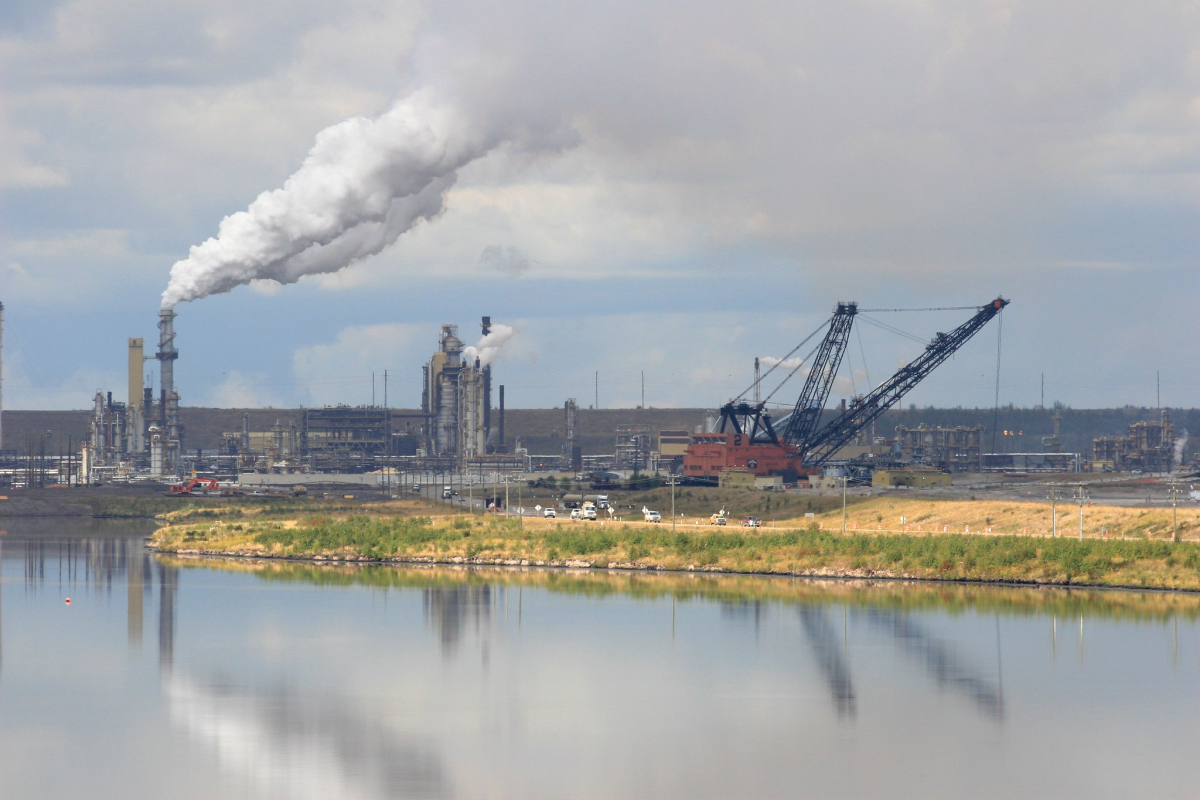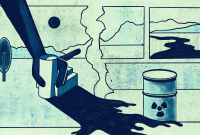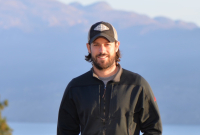Support strong Canadian climate journalism for 2025
A group representing Canada’s largest oilsands producers got the green light to evaluate a proposed carbon storage site in northeastern Alberta that would seek to curb planet-warming greenhouse gas emissions from the industry's operations.
The Pathways Alliance plans to capture carbon dioxide pollution by outfitting as many as 20 oilsands production facilities with carbon capture technology and constructing a 400-kilometre pipeline to transport it to a proposed storage hub in the Cold Lake area.
If the project is allowed to proceed, it will be one of the largest in the world. Carbon dioxide (CO2) captured from the oilsands facilities will be liquefied and sent to the storage site. Once there, the CO2 will be injected deep underground to be stored permanently, according to the organization.
Its members — Canadian Natural, Cenovus Energy, ConocoPhillips Canada, Imperial, MEG Energy and Suncor Energy — account for 95 per cent of Canada’s oilsands production. Formed from three existing industry groups last June, the alliance’s main focus is to reduce greenhouse gas emissions from oilsands production by 22 million tonnes annually by 2030 and reach net-zero emissions by 2050. The Pathways Alliance says its carbon storage project is central to those goals.
The project will require an estimated $16.5 billion of investment by 2030.

“Alberta’s geology makes this one of the most ideally suited places in the world to safely inject and permanently store CO2,” Kendall Dilling, president of the Pathways Alliance, said in a press release.
The province has “world-class storage geology,” according to a 2022 Transition Accelerator report. This is in part because the Alberta Basin is tectonically stable, meaning the tectonic plates are unlikely to shift and cause issues with the region and any CO2 that may be stored there.
But Julia Levin, national climate program manager for Environmental Defence, says how permanent the project’s carbon storage is remains unclear.
“(Carbon capture and storage) as a climate mitigation strategy (is) dependent on whether storage is permanent. And of course, that's like a really, really hard thing to ensure … there's just so much uncertainty,” Levin told Canada’s National Observer in an interview.
A carbon pipeline leak has clear implications for climate change, but there are also human health concerns and environmental questions to consider in the early days of this technology, said Levin. A rupture or leak can release a plume of CO2 gas, which aside from being explosive, can harm and even suffocate people and animals.
Pathways Alliance did not respond to questions posed by Canada’s National Observer.
On Jan. 4, Pathways Alliance and the Alberta government announced an agreement allowing the group to start its evaluation of the proposed site for the storage hub. Field work is set to begin this winter and will include geological testing to assess whether the area is suitable for storing the CO2 long term.
“If the location evaluation demonstrates that the proposed projects can provide permanent storage, companies can work with government on an agreement that provides them with the right to inject captured carbon dioxide,” Scott Johnston, press secretary for Alberta’s Energy Ministry, told Canada’s National Observer in an emailed statement.
“Alberta has a proven track record of supporting (carbon capture), and we will continue to work with industry so our province can supply safe, reliable, and affordable energy for decades to come while also reducing emissions,” said Johnston, pointing to the Quest and Alberta Carbon Trunk Line carbon capture projects, which have operated in the province since 2015.
CO2 captured by the Alberta Carbon Trunk Line is used for enhanced oil recovery, a process where carbon dioxide is injected into used-up oil wells to force more oil out.
The federal government’s carbon capture investment tax credit could help offset the estimated $16.5 billion required to complete the Pathways carbon storage network. The tax credit covers 50 per cent of projects that capture emissions from oil and gas production, with slightly varied rates for other industries. A condition of the tax credit is that the carbon dioxide can’t be used for enhanced oil recovery. Pathways Alliance has said the tax credit does not go far enough to support carbon capture technology and wants a more generous contribution from the government.
While the carbon storage network being pursued by Pathways Alliance could reduce emissions at the production stage, there is no way to capture carbon dioxide emissions when fossil fuels are burned, for example, in a car. Many environmental groups, including Environmental Defence, warn that carbon capture infrastructure will lock in fossil fuel use and is a poor use of funds that could be directed towards proven clean energy technology.
This project also raises questions about who is responsible for ensuring captured carbon dioxide remains permanently stored deep underground.
“There's a huge question of financial and legal liability and how that gets transferred,” said Levin. She compared the issue to Alberta’s orphan well problem, where landowners are left on the hook when companies fail to close and clean up inactive oil and gas wells.
If Pathways Alliance’s proposed site passes its evaluation, the group will need a closure plan to lease the land needed for the carbon storage hub, but when the government signs off on that closure plan, all the liability is transferred to taxpayers, said Levin.
According to the Alberta Energy website, carbon capture and storage operators will pay a per-tonne fee to ensure storage sites are properly maintained in the long term after operations cease to “ensure that Albertans do not bear the burden of these costs after responsibility for the sites reverts to the provincial government.”
It does not say what the per-tonne fee is. Without more information, it's hard to say whether this structure, dubbed the Post-Closure Stewardship Fund, will be sufficient to cover long-term monitoring and environmental, health or economic issues that may arise, said Levin.
Natasha Bulowski / Local Journalism Initiative / Canada’s National Observer







Comments
Thirty percent of Canada's greenhouse emissions for something like 3% of GDP is a bad deal even if you could get the 70% of foreign owners to take their share of climate pollution outside the country with them.
All of the orphaned oil and gas wells in Alberta will cost the federal and provincial taxpayers billions of dollars to clean up - all thanks to the Alberta government's failure to enforce regulations and make the large multi-national corporations clean up their own mess. What could possibly go wrong with the CO2 storage wells proposed by the same industry that left the taxpayers on the hook for the clean-ups that should have been paid for by the corporations that initially drilled the wells? Both provincial and federal environment departments claim to follow the 'polluter pays principle', but in real life they continually fail to enforce their own principles.